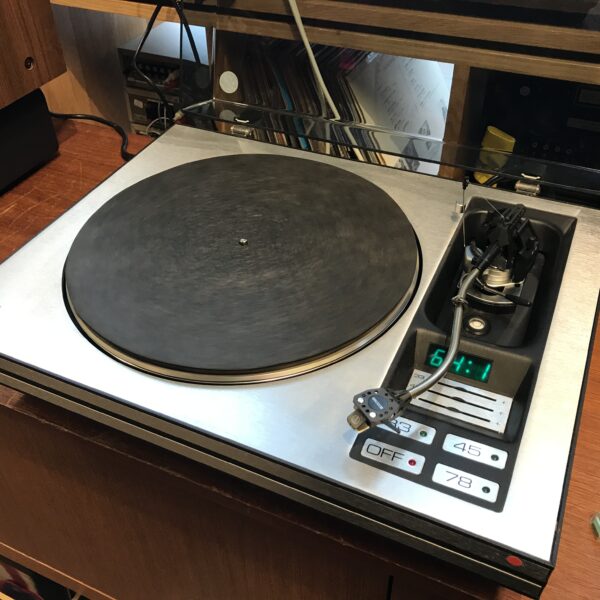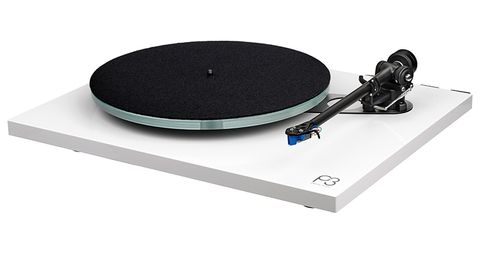This was one of the swankiest British turntables at the time, having been released in 1978. The STD 305D was an attempt to bring comfort and ease of use to the high end – without sacrificing the beautiful sonics of the finest British decks – in a sea of Japanese direct drives that worked with riflebolt accuracy.
Shouldn’t it be Scottish instead? Strathclyde Transcription Developments Ltd. of Howwood, Renfrewshire, was a prominent member in the Caledonian collective of firms from north of the border that did so much for high-end vinyl replay in the late 1970s, alongside Linn Products, Ariston, Dunlop, and Syrinx Precision Instruments. Apart from Tokyo, this region possessed the world’s highest concentration of high-end turntable manufacturers at the time!
The 305D was created to perfection. It had a 6mm alloy top plate and was based on a 2mm thick aluminium extrusion, giving it a ‘space age’ aesthetic – a stark contrast to the conservative, almost dated Linn LP12. Inside was a steel baseplate that was vibration-damped and supported by four coil springs, as well as a 1.5mm steel subchassis that was reinforced between the bearing and the armboard. This damped and connected the 9V brushed DC motor with tachogenerator, bearing, and armboard.
The bearing was supposed to be “super-finished to extremely fine limits,” and it contained a variable-density rubber mat coupled to a 156mm damped aluminium subplatter and 300mm solid aluminium plate platter. A spirit level was incorporated inside the armboard. The deck was bigger than the LP12, measuring 474x364x156mm and weighing more due to the metal within. The machine included with touch-sensitive buttons for switching speeds and an LED speed readout. The packaging was completed by a heavy-gauge smoked Perspex lid, which was the height of vogue at the time!
The 305M, which arrived a year or so later and omitted the touch-sensitive controls and speed display in favor of manual belt changing and a 16-pole AC synchronous motor, but kept the gorgeous aluminium metalwork, was the first of two variations. The 305S, which debuted the next year, was a budget-friendly variant of the M with a crackle-black finish and less vibration dampening, however the basic chassis remained the same. SME installation was standard on all models, although alternative mounting options were available.
Despite the STD 305D’s complex motor and speed control circuit, it had the same measured performance as the M, with 0.06 percent wow and flutter and -70dB rumbling (DIN B weighted), however start-up time was 0.1 second slower at 1.6 seconds. All of the decks sounded great, with the M being the finest. It had a brighter and lighter timbre than an LP12 of the time, but it was still incredibly sweet and silky. It could catch the depth of a recording tonally, and it bounced along extremely nicely rhythmically, even if it lacked the Linn’s sophisticated rhythmic knowledge. Nonetheless, these were all excellent performers, with the STD 305S providing particularly outstanding value for money, providing far superior sound to a Rega Planar 3 without costing significantly more.
The only drawback was the deck’s general fiddliness; with four springs underneath and a P-clip, getting the most out of it isn’t a ten-minute process. However, if it’s properly fettled, you’ll be pleasantly delighted by the sound. Unfortunately, STD was unable to endure the early 1980s recession and the introduction of the Compact Disc, and its outstanding turntables were virtually forgotten.







